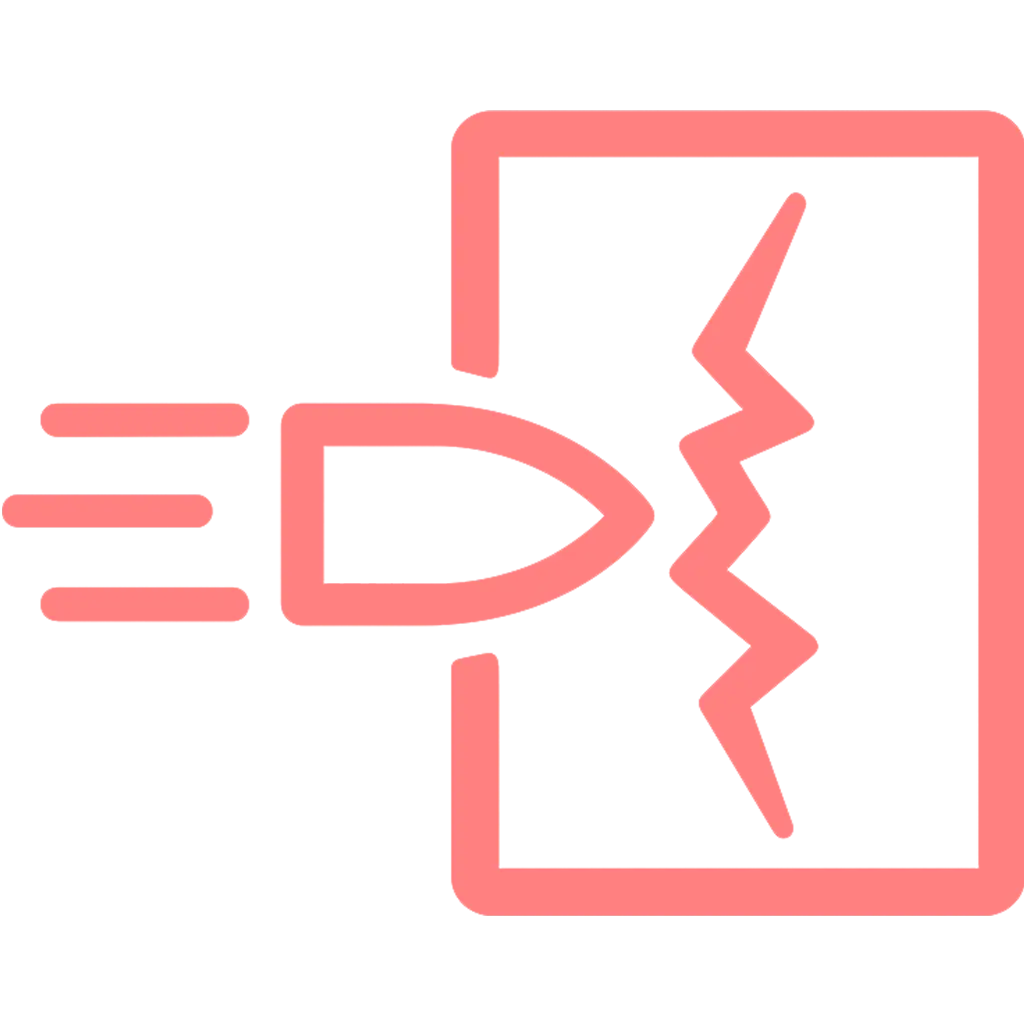Install Asset
Install via Godot
To maintain one source of truth, Godot Asset Library is just a mirror of the old asset library so you can download directly on Godot via the integrated asset library browser

Quick Information

Advanced physics-based bullet penetration system for Godot 4.x that simulates realistic projectile behavior through various materials. The system calculates damage reduction based on material thickness, hardness, and penetration depth. Uses raycasting, making it suitable for hitscan weapons.
Ballistic Penetration System
Advanced physics-based bullet penetration system for Godot 4 that simulates realistic projectile behavior through various materials. The system calculates damage reduction based on material thickness, hardness, and penetration depth. Uses raycasting, making it suitable for hitscan weapons.
https://github.com/user-attachments/assets/93f6dd95-38ff-462b-9120-626388da3e35
Key Features:
- Material-based Physics: Different penetration properties for wood, metal, concrete, etc.
- Thickness-aware Damage: Damage scales with material thickness and density
- Multi-layer Penetration: Bullets can penetrate multiple objects in sequence
- Performance Optimized: Efficient collision detection and raycasting
- Customizable: Easy to configure material properties and penetration rules, with code that can be easily modified to add additional features like ricochet
Performance
Performance-optimized for real-time use. Benchmark results (3 penetration levels):
- 1024 projectiles × 3 penetrations — ~45–49 ms/frame
- 512 projectiles × 3 penetrations — ~12.9–22 ms/frame
- 8 projectiles × 3 penetrations — ~0.37 ms/frame
- 1 projectile × 3 penetrations — ~0.070–0.130 ms/frame
Note: Higher penetration count require more calculations (for rays and other parameters). This dependency is non-linear, similar to the relationship with the number of shots per frame.
Note: Benchmarking was performed inside the editor
Usage
Basic Setup
- Add the penetration system script or scene (more flexibility) as an autoload/singleton in your project
- Configure material properties in the
penetration_datadictionary - Assign materials to your objects. You can do this in two ways:
- Via code:
collider.set_meta(&"material", &"wood") - Via the Inspector: Add a
metaproperty named"material"with StringName type to your scene objects
- Via code:
Basic Implementation
# Simple firing example
# G_PenetrationSystem - autoload/singleton
@onready var ray_cast_3d: RayCast3D = $path # or unique name %name
func _shoot():
var origin: Vector3 = self.global_position
var direction: Vector3 = PenetrationSystem.get_raycast_global_direction(ray_cast_3d)
var _damage : float = 20.0 # Base damage
var _distance : float = 20.0 # Max distance
var _bullet_power : float = 1.0
var _max_penetrations_count : int = 3
# Setup parametres
G_PenetrationSystem.setup_bullet_params(_damage, _distance, _bullet_power, _max_penetrations_count)
# Call the penetration system
G_PenetrationSystem.fire_bullet(origin, direction, max_penetrations, G_PenetrationSystem.penetration_data)
Advanced Usage
# Custom material configuration
# Materials can be configured directly in PenetrationSystem or passed as parameter
# G_PenetrationSystem - autoload/singleton
var custom_materials = {
"glass": {
&"max_thickness": 0.8, # Maximum penetration thickness of one object
&"damage_multiplier": 0.9, # Base Penetration Damage Multiplier
&"penetration_cost": 0.2 # Hardness of the material, how much the bullet's force and damage will decrease after penetration
},
"armor": {
&"max_thickness": 0.05,
&"damage_multiplier": 0.1,
&"penetration_cost": 5.0
}
}
# Option 1: Configure directly in the singleton
G_PenetrationSystem.penetration_data = custom_materials
# Option 2: Pass as parameter when firing
func _shoot_advanced():
var origin : Vector3 = self.global_position
var direction : Vector3 = PenetrationSystem.get_raycast_global_direction(ray_cast_3d)
var _damage : float = 20.0 # Base damage
var _distance : float = 20.0 # Max distance
var _bullet_power : float = 1.0
var _max_penetrations_count : int = 3
# Setup parametres
G_PenetrationSystem.setup_bullet_params(_damage, _distance, _bullet_power, _max_penetrations_count)
# Call the penetration system
G_PenetrationSystem.fire_bullet(origin, direction, max_penetrations, custom_materials)
Damage Handling
Implement the take_damage method in your objects:
func take_damage(damage: float, hit_position: Vector3):
health -= damage
# Add visual effects, sound, etc.
if health <= 0:
destroy()
Realistic Simulation:
- Energy Loss Based on Material Hardness: Bullets lose energy proportionally to the hardness of penetrated materials
- Progressive Damage Reduction: Damage decreases with each successive penetration
- Smart Termination: Automatic stopping when damage becomes negligible to optimize performance
- Advanced Geometry Support: Works with complex collision shapes and CSG geometry
License
MIT License - see LICENSE file for details.
Advanced physics-based bullet penetration system for Godot 4.x that simulates realistic projectile behavior through various materials. The system calculates damage reduction based on material thickness, hardness, and penetration depth. Uses raycasting, making it suitable for hitscan weapons.
Reviews
Quick Information

Advanced physics-based bullet penetration system for Godot 4.x that simulates realistic projectile behavior through various materials. The system calculates damage reduction based on material thickness, hardness, and penetration depth. Uses raycasting, making it suitable for hitscan weapons.

